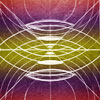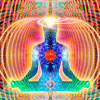Walter Russell: The Universal One
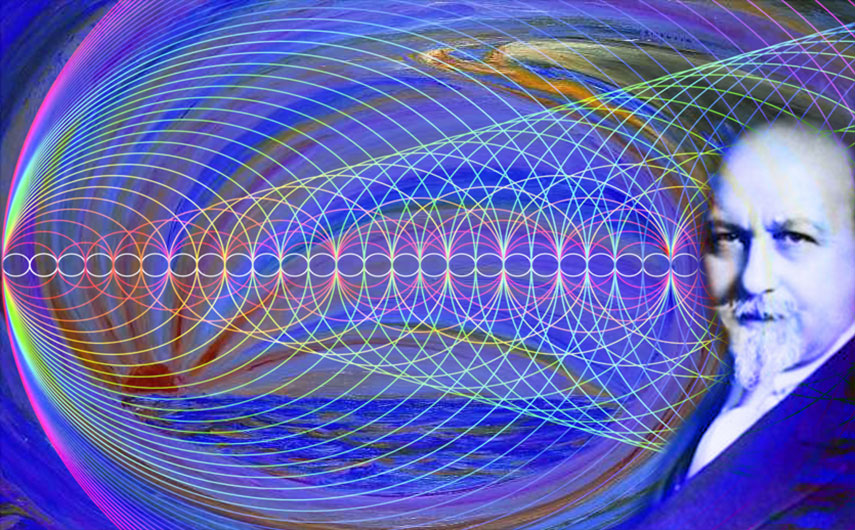 by Bob Ohearn
by Bob Ohearn
Walter Russell was born in Boston, Massachusetts, May 19th, 1871. He was known for his achievements as a painter, sculptor, author and builder and less well known as a natural philosopher and for his unified theory in physics and cosmogony.
He posited that the universe was founded on a unifying principle of rhythmic balanced interchange. This physical theory, laid out primarily in his books The Secret of Light (1947) and The Message of the Divine Iliad (1948–49), has not been accepted by mainstream scientists. Russell asserted that this was mainly due to a difference in the assumptions made about the existence of mind and matter; Russell assumes the existence of mind as cause while he believes that scientists in general assume the existence of mind as effect. Quantum physicists are only just recognizing the depth of truth contained in his writings on the subject.
Russell was also proficient in philosophy, music, ice skating, and was a professor at the institution he founded, the University of Science and Philosophy (USP). He believed mediocrity is self-inflicted and genius is self-bestowed. The content of his public lectures and his writing about living philosophy place him firmly in the New Thought Movement.
A true polymath (Renaissance Man), he could play any tune he heard with one finger on the piano before he could walk or talk. A blind neighbor taught him to play the piano and was the spiritual interchange partner of his childhood. About that, he wrote:
“For a boy, I had been doing extraordinary things, which caused much wonder. Before I could walk, I could play on the piano, with one finger, any tunes that I heard, then, gradually, with all fingers, even the complex melodies played by blind Mr. Maynard, who, to me, was the greatest man in all the world. Mr. Maynard lived in the dark but walked and talked with God in the Light. And what the soul of Creation told his Soul, he told me and I walked and talked with God in those early days in His wonderlands of Peat Meadow and the huge oaks down in Bachelder’s wilds where nobody went but me, for no one else in all My World heard what I heard there nor saw what I saw there so it was mine alone, all that glory just mine alone.”
At the age of seven, while playing marbles with other boys, he felt the urge to retreat into the solitude of the woods, where, for the first time, he experienced leaving his body and feeling the ecstasy of cosmic consciousness. From then on, he had such an experience every year in May, which made him different from the other boys, with whom he could not share the ecstasy of “my world”, as he called it. Each year in May, year after year, he went south to the forests to be alone with God, experiencing the oneness of the universe. Each seventh year this experience was extremely intensive. It gave him inner peace on one hand, but also inner loneliness on the other. His blind maestro was the only friend of his early days.
At the age of nine, he was put to work, because the money was badly needed. He left his village school to work as a cash boy in a dry goods store. When he was fourteen years of age he had black diphtheria and was already declared dead, when he had his second great illumining (illumination), getting the knowing (knowledge) about self healing. To the amazement of his weeping parents and of the doctors he arose from his bed perfectly healed.
A musician from infancy, he secured a church organist’s position at thirteen, and entered art school. Since then, he was entirely self-supporting and self-educated. As a young man he was an illustrator for books and magazines.
In 1894, at the age of twenty-three, he married Helen Andrews. During this first marriage, he had two daughters, both born before the end of the century, and two granddaughters. But most of the time, Russell lived alone in his studio in Carnegie Hall in New York, while his family lived in Washington, Connecticut, in a house he had designed and built for them.
From 1897 to 1898 he was Art Editor of Colliers Weekly, then became war artist and correspondent for Collier’s and Century in the Spanish War. In 1900 he completed his allegorical painting entitled The Might of Ages which was first exhibited in the Turin International Art Exposition, winning honorable mention from Italy, then exhibited throughout Europe, winning him many honors from France, Belgium and Spain, including membership to the Spanish Academic of Arts and Letters, Toledo.
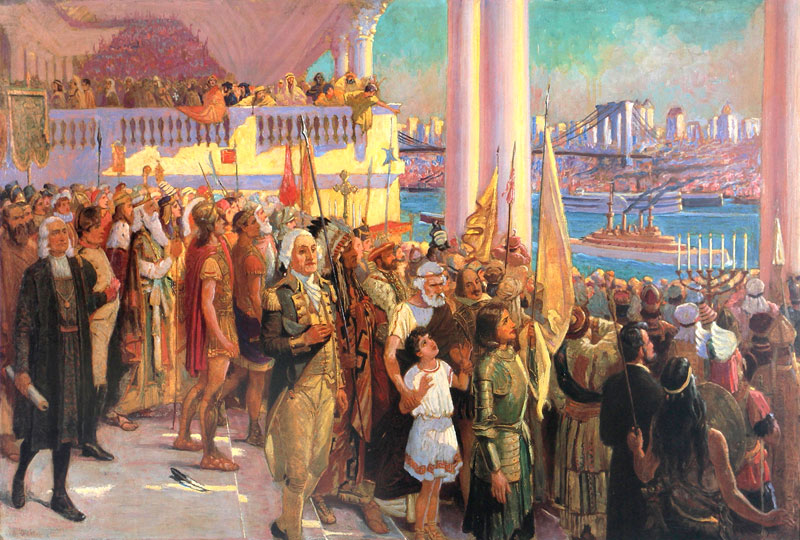
The Might Of Ages by Walter Russell
From then on, until 1914, he mainly painted portraits of children. His principal instructors in art had been Albert Munsell and Ernest Major of Boston, Howard Pyle of Philadelphia and Jean Paul Laurens from the Academy Julian in Paris.
From 1914 he mainly painted portraits of notables, wrote books and designed numerous large buildings, some of which still exist. Together with other sculptors, architects and painters he conceived the principle of co-operative ownership for flats in New York.
In 1921, at the age of 49, Walter Russell experienced his Illumination into the Light of Cosmic Consciousness during a thirty-nine day and night period. His family even consulted specialists in order to decide if he had to be admitted into a psychiatric clinic. Fortunately these doctors were very impressed by his recordings and sensed, that something great was happening.
In 1927, Walter Russell published The Universal One, his first attempt to explain the Cosmic Laws for the established scientists. As he failed completely, he worked another twenty years on it. The result is his The Secret of Light, which he published in 1947.
In 1941, the American Academy of Sciences conferred a doctorate on him, after several laboratories had isolated the elements which he had foreseen: Deuterium, Tritium, Neptunium and Plutonium.
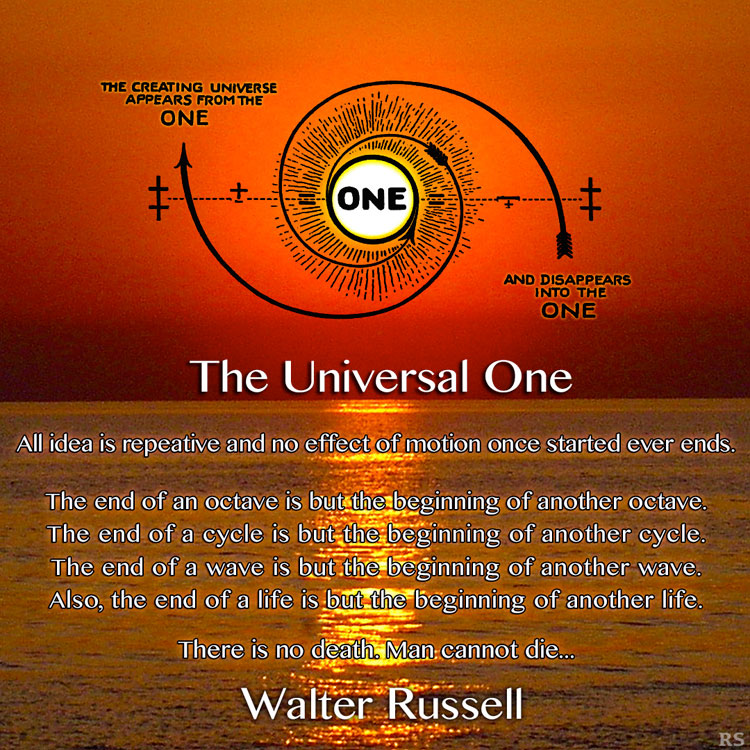 In the meantime he gave numerous speeches and for 12 years he lectured upon the Law of rhythmic interchange and ethical principles in business to the officers and salesmen of IBM. Together with other notable figures of his time he built the Twilight Club, which very successfully gave positive spiritual impulses for the betterment of humankind. Their efforts resulted in notable service organizations like the Rotary Club, The Lions Club, the Boy Scouts of America and many others. They stood up for a right of education, for minimum wages, controlled advertising and much more, getting big support from Adolph Ochs, the owner of the New York Times at that time.
In the meantime he gave numerous speeches and for 12 years he lectured upon the Law of rhythmic interchange and ethical principles in business to the officers and salesmen of IBM. Together with other notable figures of his time he built the Twilight Club, which very successfully gave positive spiritual impulses for the betterment of humankind. Their efforts resulted in notable service organizations like the Rotary Club, The Lions Club, the Boy Scouts of America and many others. They stood up for a right of education, for minimum wages, controlled advertising and much more, getting big support from Adolph Ochs, the owner of the New York Times at that time.
In 1946, his second wife Daisy Stebbing read some of Walter Russell’s works and immediately knew that this author was her soul mate. She got in contact with him and later reported what he said to her during their first telephone conversation: “I know your voice. I have been hearing it inside of me for decades.” In 1948 the 77-year-old Walter Russell married the 43-year-old woman, who he affectionately called Lao, derived from Lao Tse. The divorce from his first wife, to whom he had been married to for 55 years, went through the press and was met with disapproval.
Lao and Walter worked together for fifteen years and founded the University of Science and Philosophy on their splendid country estate in Swannanoa with the capital that Lao gained by setting up a cosmetics company. Walter and Lao developed the home study course and published the alerting book Atomic Suicide? in 1957.
Lao also wrote several books herself. Her main concern was to attach more value to the feminine, dark, discharged and expanding principle as opposed to the predominant male-concentrated principal of our culture.
Walter Russell, who was mentally awake and active right up until the end, died on his 92nd birthday, the 19th of May 1963. Walter Cronkite in the national television evening news, commenting on Russell’s death, referred to him as “… the Leonardo da Vinci of our time.”
Right up to her death in 1988, Lao Russell continued to run the University and to edit his work. In 1997, due to financial difficulties, the foundation board had to sell the sumptuous, Italian-style palace, where the Russells had lived and worked. The foundation is striving to keep alive the heritage of the University of Science and Philosophy and the Twilight Club.
Furthermore, there are many people who, independently from the official organizations, do not only invest a lot of time and effort in Russell’s work but also refer to it and try to enhance it (e.g. Yasuhiko Kimura and the Journal and Ben Groseclose).
Russell’s work, however, had almost been forgotten for a long time as Nikola Tesla had advised him to lock it away in a safe for 1000 years, because mankind was not yet mature enough for it. It was Timothy Binder, president of the University of Science and Philosophy, who brought the knowledge of Walter Russell to the attention of a wider circle of interested parties in Europe during a talk in Lindau in 1992. This is where the German biologist, therapist and publicist Dagmar Neubronner encountered his work. She started translating his works, organized lectures, seminars and conferences about Russell and made his name known in Europe.
Since 1997 Dagmar Neubronner has been publishing Russell’s works in German. She is keeping the publishing rights for all European languages and supporting publications in these languages.
The term New Age in its contemporary sense can be traced back at least to 1888. Walter Russell spoke of “… this New Age philosophy of the spiritual re-awakening of man … Man’s purpose in this New Age is to acquire more and more knowledge …” in his essay “Power Through Knowledge,” which was published in 1944.
Russell accepted Richard Maurice Bucke’s premise that not only the human body, but also human consciousness, had evolved in stages, that human consciousness periodically made iterative leaps, such as that from animal awareness to rational self-awareness, many millennia ago. Russell believed that humankind was on the brink of making another key, evolutionary leap in consciousness. The next cycle of human evolution, said Bucke, would be from rational self-consciousness to spiritual super-consciousness on the order of that experienced by sages, religious figures, and mystics of the past 2,500 years.
In 1947-48, Russell wrote: “This New Age is marking the dawn of a new world-thought. That new thought is a new cosmic concept of the value of man to man. The whole world is discovering that all mankind is one and that the unity of man is real – not just an abstract idea. Mankind is beginning to discover that the hurt of any man hurts every man, and, conversely, the uplift of any man uplifts every man” (Message of the Divine Iliad, Vol. 2). Russell’s predictions about what the New Age would bring included “a marriage between religion and science” (MDI). Russell appeared to believe that this “New Age” would begin in 1946, based on a vision he had in 1921. The most extensive treatment of Russell’s ideas are found in his book A Course in Cosmic Consciousness.
The Universal One – Animated – Part I
The Universal One – Animated – Part II
The Universal One – Animated – Part III
The Secret of Light
BOOKS (pdfs)
Chronological List Of Some Of His Major Works
Walter Russell
The Book of Early Whisperings (1920)
Deeply inspired by Nature, Walter Russell early in life sought solitude in walks through meadows and woods, by lakes and streams. The Book of Early Whisperings was written during those early years when he loved to spend time alone sketching his favorite scenes or in contemplation of the natural order of life.
Walter Russell
The Universal One (1927)
With this work Walter Russell appealed to the scientific world six years after his primary Illumination experience in order to publicize the laws and cosmic interrelations that had been revealed to him. More than one thousand editions of this work, that had been published at his own expense, were sent to the top experts of research and science. Their reaction was devastating it was zero. Most of them did not even acknowledge having received this large-sized volume and hardly anybody, aside from a few open spirits such as Fritz Berger and Nikola Tesla, took the content of this book seriously.
Walter Russell
The Russell Genero-Radiative Concept (1930)
In this booklet, after his disappointment with “The Universal One”, Russell once again set out the universal partner principle as simply as possible. Also this book was not noticed by scientists, but read with enthusiasm by many laymen.
Walter Russell
The Sculptor Searches for Mark Twain’s Immortality (1934)
The famous painter Walter Russell only began his sculptural work at the age of 56. The most astonishing masterpiece is a sculpture in which 27 novel figures from Mark Twain’s literary work have been composed into a single unit. In his lecture Russell describes the inner and outer process of this phenomenal work.
Walter Russell
The Meaning and Acquisition of Wealth (1935)
Walter Russell
The Electric Nature of the Universe (1936)
A compact representation of Walter Russell’s cosmology.
Walter Russell
The Immortality of Man (1944)
Human immortality results from the universal partner principle.
Walter Russell
The Fifth Kingdom Man (1946)
Walter Russell
The Self-Multiplication Principle (1946)
Indeed, the genius is inherent in everyone but how has Walter Russell accomplished such an overwhelming wealth of works? In this incisive talk he describes just that in a very comprehensible manner. We can all do it!
Walter Russell
The Secret of Working Knowingly With God (1946)
Walter Russell
Genius Inherent In Everyone (1946)
Walter Russell was convinced that every human being has the potential of ingenuity. One merely needs to overcome one’s inhibitions and realize that we are all one in God. A deeply inspiring and encouraging book.
Walter Russell
The Secret Of Light (1947)
Twenty years after the staggering reaction caused by “The Universal One”, Walter Russell presented the basic cosmic correlations in a simplified manner and with more conventional scientific wording. The radical innovation and simplicity of his thoughts in this book make for most sophisticated reading, but the more one immerses oneself the more accessible it becomes.
Walter Russell
The Message of The Divine Iliad, Vol. I and II (1948/49)
During his 39 day and night period of Illumination in 1921, Walter Russell jotted down some 40.000 words that express what he learned while he experienced the Light of Cosmic Consciousness. These pivotal texts, that were published bit by bit and are referred to in almost all of his works, have been compiled in this comprehensive two-volume edition, including explanatory talks as well as a questions and answers section.
Walter and Lao Russell
The Home Study Course (1950)
From 1950 Lao and Walter Russell offered the “Transformational Study of Universal Law, Natural Science and Living Philosophy”, the legendary “Home Study Course”. Walter Russell wrote in the preface:
“The purpose of these lessons is twofold. First and foremost, they should give you personal strength and expression of your personal creativity and enable you to fully understand the cause of all the effects you produce. This is how you can control these effects…
The second purpose is to thoroughly define the illusion of this universe, which seems so real to the human senses, and to prove satisfactorily even to the most exact scientists that our entire universe of electric waves is only a cosmic cinema…”
“What you know, you think; what you think, you will.” (W. Russell)
Walter and Lao Russell
Lectures for a New World (1950)
Audio book with original recordings of Walter and Lao Russell’s lectures.
Walter Russell
The Dawn of A New Day In Human Relations (1951)
On his eightieth birthday, Russell spoke in front of highly ranked members of the military in the U.S. on Armed Forces Day. His simple and still stunningly radical elaboration on the causes of war and the preconditions for long-lasting peace are still very much up-to-date and sometimes seem to only just have to be brought to the attention of the current President of the United States.
Walter Russell
Caring For Your Physical And Spiritual Health (1951)
Walter Russell
A New Concept of the Universe (1953)
Walter and Lao Russell
Scientific Answer To Human Relations (1954)
Walter and Lao Russell
The World Crisis – Its Explanation And Solution (1955)
Lao Russell
God Will Work With You But Not For You (1955)
Walter Russell’s congenial wife often receives too little attention in view of the wealth of her partner’s work, but she also had something to say herself. Her main focus was the topic balance between man and woman, which she realized in her very happy marriage with Walter Russell. Without Lao’s energy, neither the University of Science and Philosophy nor the Home Study Course would probably have become reality.
The book explains clearly how to use the universal laws. The balance between their own energy and the trusting sailing on the stream of being makes it understandable how Lao and Walter Russell could achieve what they have done without having to forego a cheerful, sociable, creative life in abundance. For all those who want to take their lives into their own hands – but not to push locomotives in the sweat of their face, but to sail in joy on the possibilities of the universe.
Walter and Lao Russell
The One-World-Purpose (1956)
Walter and Lao Russell
Atomic Suicide? (1957)
The whole issue as to whether radioactivity can or can not be used as the next world fuel, stands or falls upon one issue alone, and that issue is whether science can protect organic life from extinction, or whether it can not. Our contention is that it can not.
A quote from Atomic Suicide?
Nature projects motion from space and space reflects it back again. The one point which we accentuate in this whole process is the highly explosive nature of the radioactive metals. We do this for the purpose of demonstrating that this high and quick explosive power is needed in Natures death process to assist in the decay and death of the slow dying rocky formations which first constitute the bodies of new planets.
Water, Oxygen, Humus and the necessary carbohydrates of life are created by the exploding metallic bullets of the dying [radioactive] elements as they assist dense elements [of the rocky formations] to die, but if they also project their death into less dense bodies, such as animal tissues, those lesser solids and the gases of their atmosphere, will again be assisted in their desire to expand, which is inherent in all matter.
In conclusion, therefore, we say to you that every ounce of free radioactive metal which is removed from its purposeful position of bombarding the infertile, dry, hot rocks of Nature to yield pairs of bodies for making organic life possible on this planet, will not only clear the entire planet of all organic life but will keep it thus cleared until the many uranium piles above ground, are entirely dissolved by their own radiations. The number of thousands of years necessary for that is not predictable, but it is calculated by authorities that plutonium rays have a duration of over twenty thousand years. That is a long time.
Lao Russell
Love – A Scientific And Living Philosophy Of Love and Sex (1966)
Lao Russell
Why You Cannot Die! Reincarnation Explained (1972)
Walter Russell
The Quest of the Grail (1991)
Walter Russell
THINK: The First Principle of Business Success (2003)
There are many more books than these that Walter Russell has written during his lifetime. Here is an example of a children’s story:
Biographical Overview:
The Man Who Tapped The Secrets Of The Universe
For More Information:
Eight Facts To Know About Walter Russell
Sample Drawings And Diagrams of Walter Russell
See Part II here.
Posted in Other Topics, Science For The New Agewith comments disabled.


